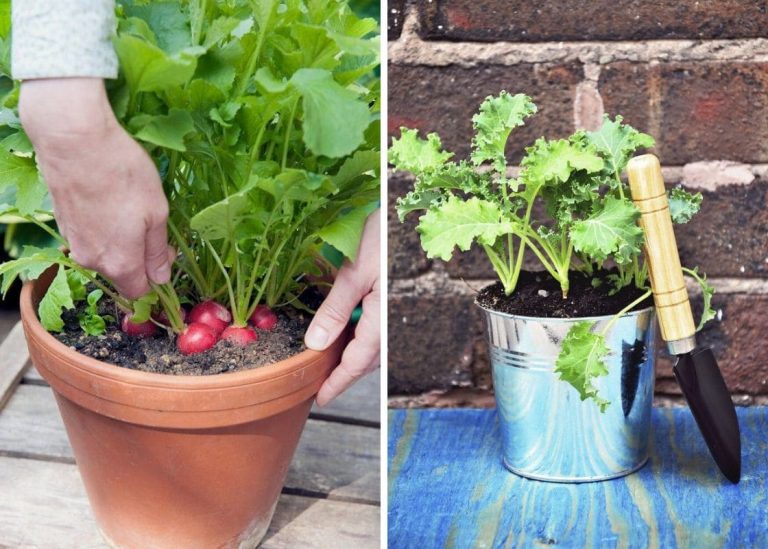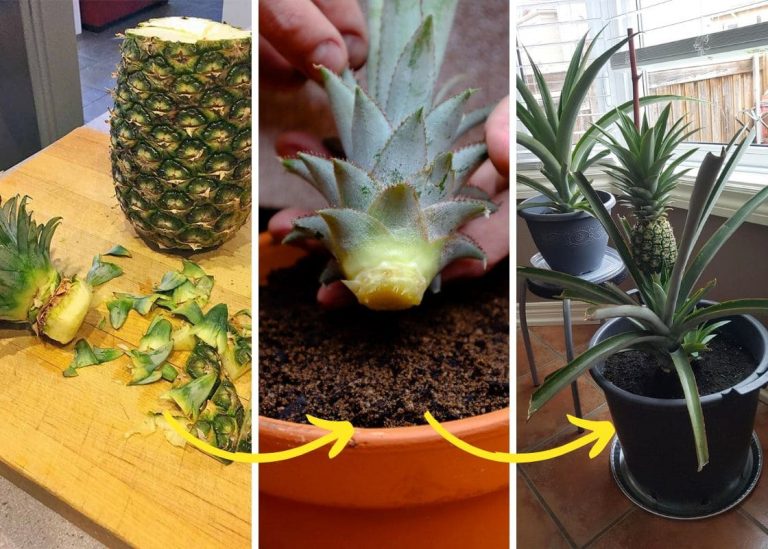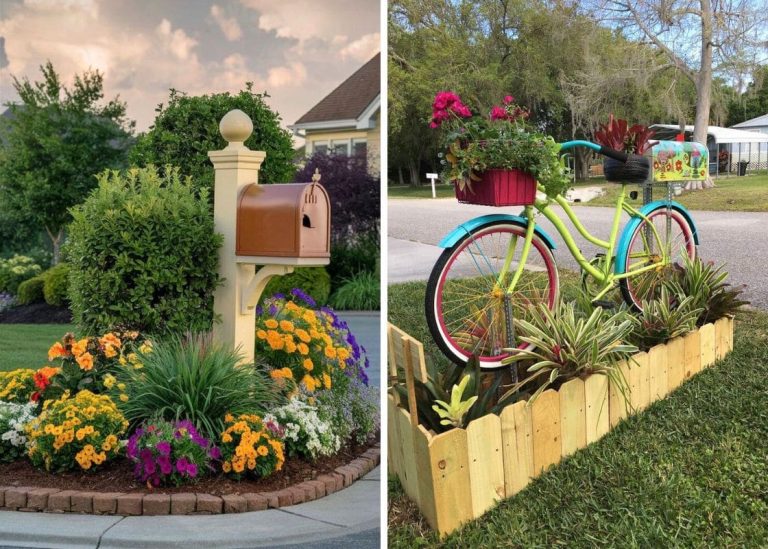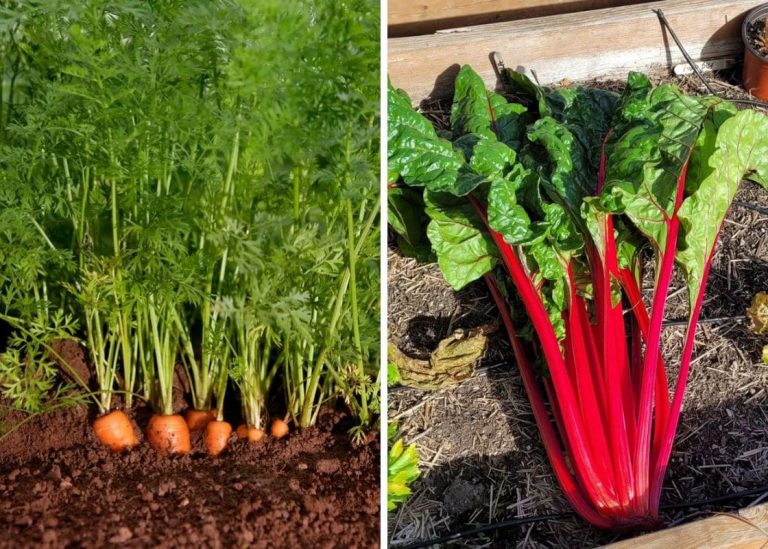24 Perennials with Orange Flowers For Fiery Beauty
One spring morning, I spotted a single flame-orange bloom poking through the tangled green at the far edge of our garden bed. It was a volunteer marigold, seeded from the year before. I almost pulled it, mistaking it for a weed. But something made me stop. The color was so bold, so alive—it stopped me in my tracks. It looked like a flicker of sunrise had taken root in the soil.
Since then, orange flowers have had my heart. They don’t just decorate a garden—they electrify it. They glow during golden hour, they hold their own beside deep purples and soft creams, and they bring energy even on cloudy days. Some gardeners shy away, thinking orange is too loud or hard to match. But I’ve found the opposite—when balanced with foliage or used as a fiery accent, orange is magnetic. It draws the eye and lifts the spirit.
I’ve gathered these perennials not just from my own beds, but from years of plant swaps, nursery finds, and stories shared over garden fences. Each one brings something unique—some bloom early, others hold on till frost. Some are tiny and charming, others architectural and bold. But all of them, without fail, come back to light up the garden year after year.
#1. Butterfly Weed
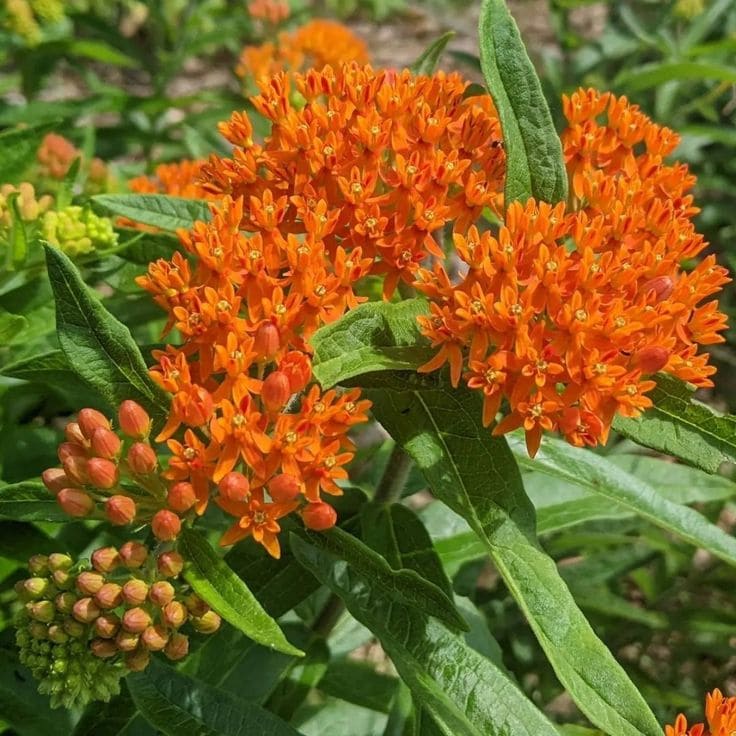
When I planted butterfly weed, I was simply hoping to lure in more pollinators. What I didn’t expect was how quickly it would become one of my favorite plants. Bright clusters of orange flowers rise above narrow, leafy stems—like little bursts of fire—and monarch butterflies seem to find it from miles away. I’ve caught myself pausing in the middle of yard work, just to watch a cloud of wings fluttering over the blooms.
This perennial thrives in dry, sandy soil and full sun, making it perfect for low-maintenance spaces. Once established, it rarely needs water and even improves your soil health. It’s also a host plant for monarch caterpillars, so you’re not just planting a flower—you’re supporting a life cycle. I like tucking it along gravel paths or letting it go a bit wild in a sunny corner.
#2. Orange Coneflower
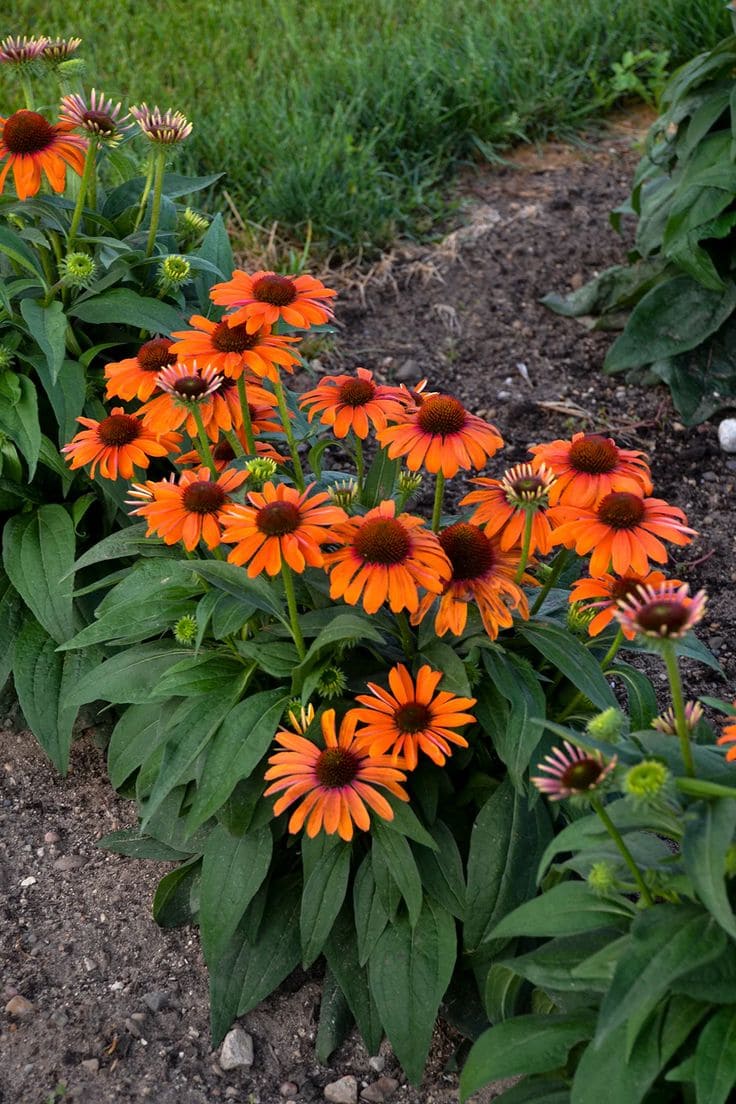
Orange coneflowers feel like summer held in a bloom. They’ve got that classic daisy shape, but the petals start as deep gold and burn into a richer orange as they reach the center. I first grew them after a neighbor gave me a few divisions, and now they fill my late-season beds with rich color and cheerful energy.
They bloom from midsummer into fall and don’t mind poor soil, dry days, or being ignored. These perennials are great for adding height without crowding, and pollinators adore them. I’ve often mixed them with deep purple salvias or white echinacea for a punchy, prairie-inspired look that carries the garden right through September.
#3. Mexican Sunflower
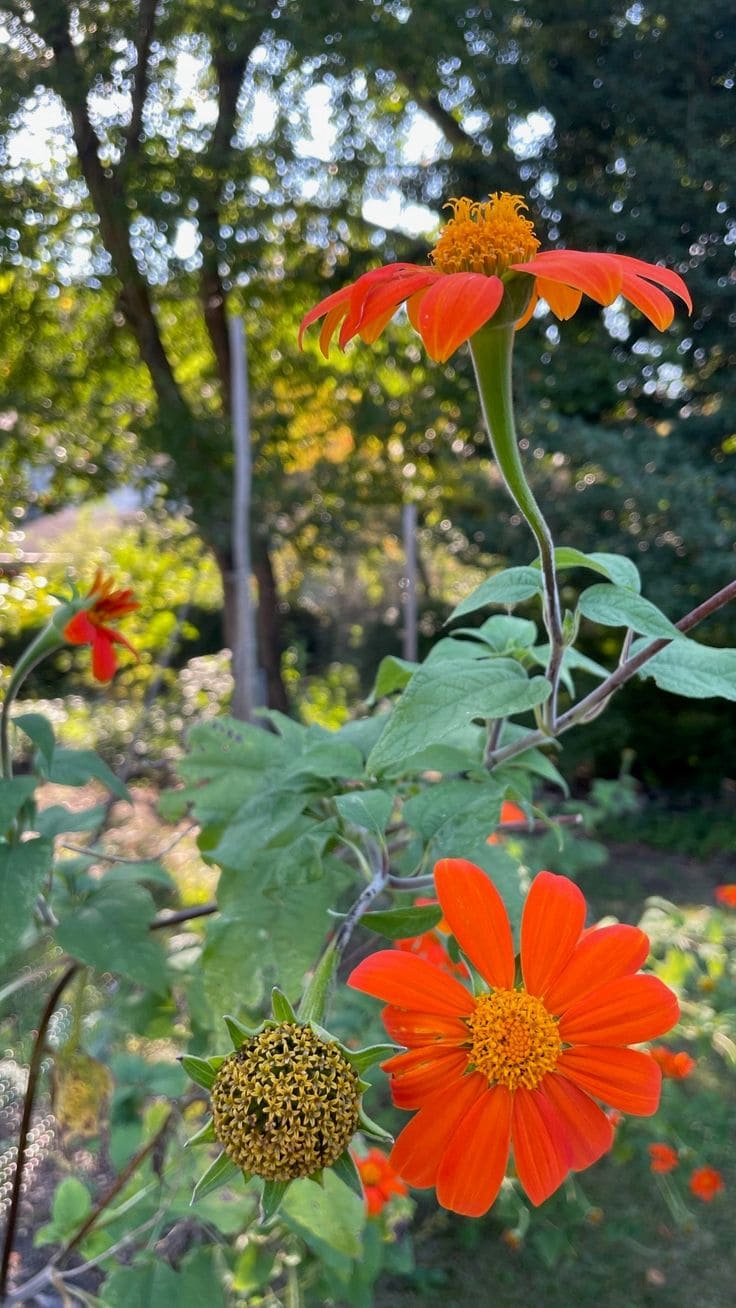
Every time I see a Mexican sunflower, I think of hot days, hummingbirds, and blazing color. These tall growers—up to six feet, sometimes more—send out brilliant orange blooms that hold court over the garden like little suns. I first saw them in a friend’s butterfly garden and immediately added them to my own the next year.
While not a perennial in all zones, they self-seed easily and return reliably in warmer climates. They thrive in heat and dry soil and bloom nonstop until the first frost. The real joy is watching butterflies and bees swarm them in the afternoon light—it turns the garden into a living, buzzing painting.
#4. Daylilies
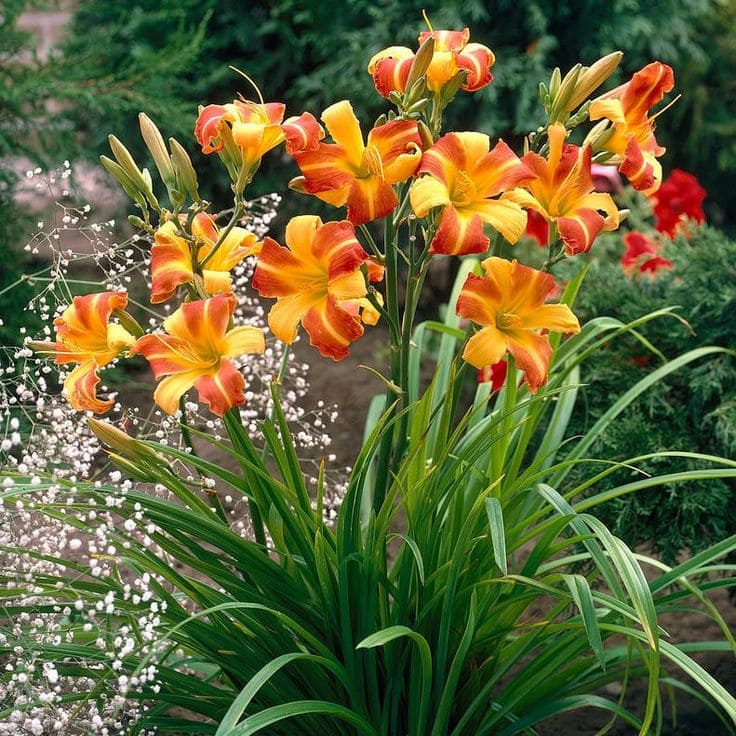
Daylilies are the kind of plant that make you feel like a confident gardener, even on your busiest weeks. With orange varieties ranging from soft apricot to fiery rust, they offer endless color through the summer. Each bloom lasts a single day, but they come in such waves, you barely notice one fading before another appears.
I’ve planted them along my fence line where the soil is dry and the sun beats down—they love it. Year after year, they return fuller and brighter, asking for nothing more than space to stretch. They’re ideal for beginners or anyone wanting a lush look with very little fuss.
#5. California Poppy

The first time I saw a hillside dotted with California poppies, it looked like the earth had caught fire—in the best way. Their silky petals glow with a golden-orange shimmer, and even though they look delicate, they’re surprisingly tough.
These poppies thrive in sandy, rocky soils and don’t mind going without water. I’ve let them self-seed in a neglected patch of my garden, and every spring, they reappear like tiny flickers of joy. Perfect for wildflower beds, pollinator patches, or that sunny spot you never got around to watering.
#6. Crocosmia
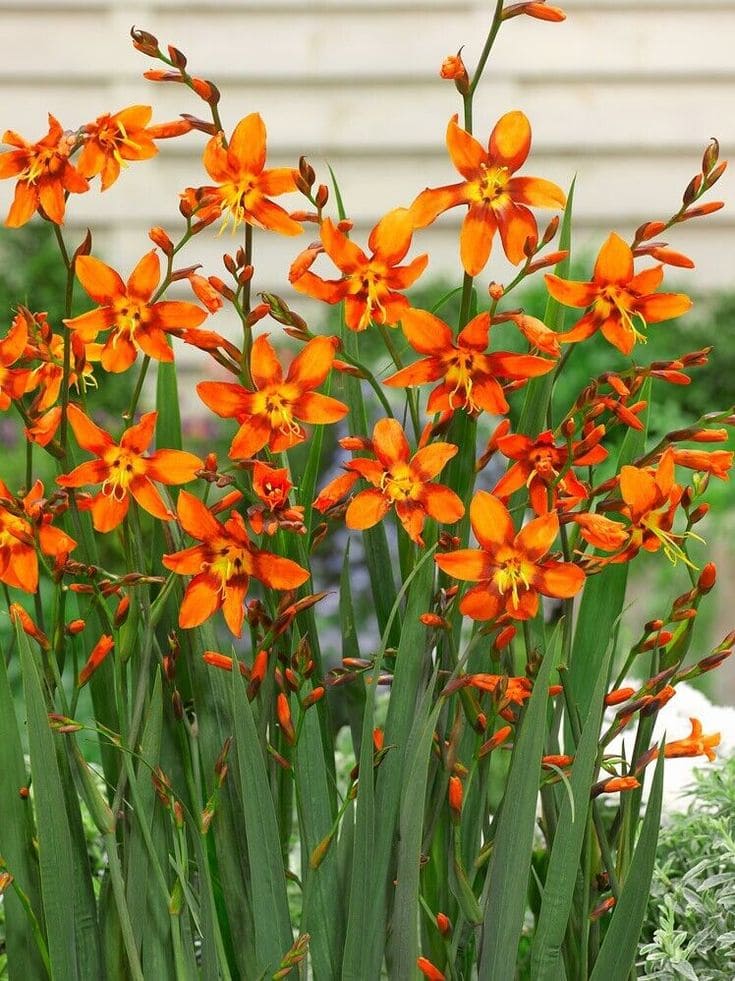
Crocosmia brings a touch of drama in the best way. Arching stems topped with bright orange, tube-shaped blooms dance in the breeze and draw hummingbirds like magnets. I added them to the back of my border for height, but now they’ve spread into their own vibrant rhythm.
They love sun and well-drained soil, and once established, they’re here to stay. I divide mine every few years to keep the display full and tidy. Crocosmia adds movement, heat, and a tropical feel to the garden that surprises visitors every time.
#7. Orange Oriental Poppy
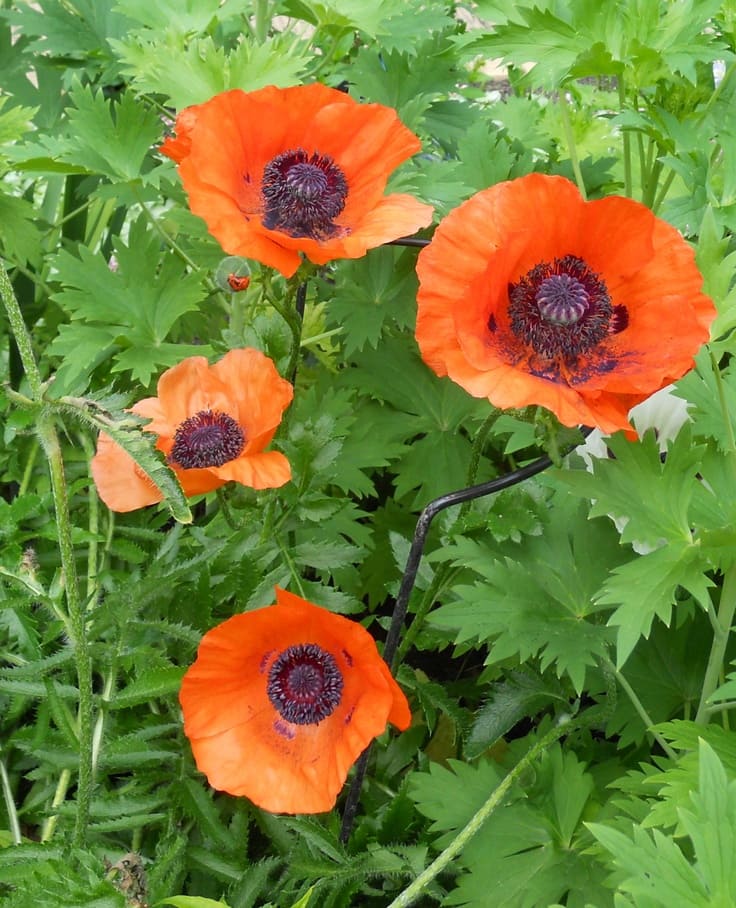
Orange oriental poppies are the show-stoppers of late spring. Their huge, papery blooms look like crumpled silk lanterns catching the morning sun. The first time one opened in my garden, I actually gasped. No photo ever does them justice.
They bloom briefly but make a bold impact. After flowering, the foliage fades, so I pair them with summer perennials to keep the bed looking full. If you have a sunny spot and want a dash of garden theater, these poppies deliver.
#8. Blanket Flower

Blanket flowers are the rebels in my garden—the ones that thrive where others sulk. Their fiery red and orange petals look dipped in sunset, and they bloom with the kind of confidence that doesn’t need approval. I tucked a few into a dry, rocky bed as a test, and now they’ve taken over in the best way.
Their cheerful faces keep the garden alive through the hottest days of summer, and even when everything else fades, they keep shining. I’ve grown fond of watching finches pick at the seed heads in fall—it’s a small, quiet kind of magic.
#9. Trumpet Vine
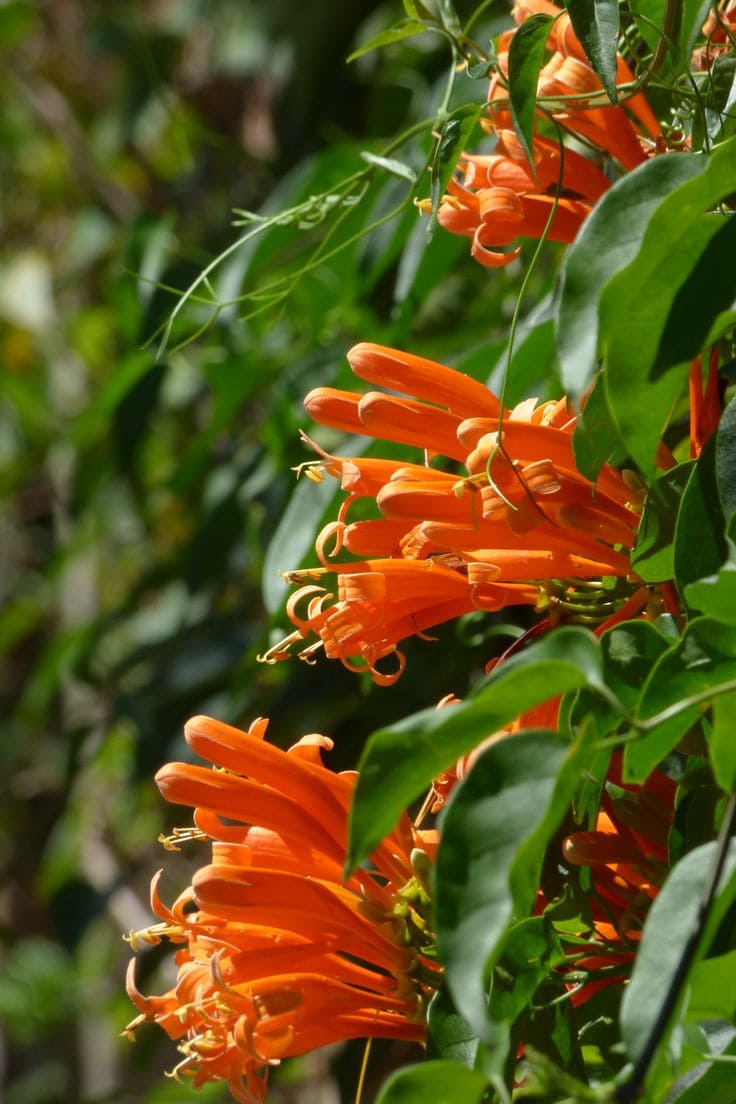
Big, bold, and unstoppable. That’s how I’d describe trumpet vine. It’s the plant I turn to when a bare fence or arbor needs something wild and wonderful. Those flaming-orange, trumpet-shaped blooms spill down like a cascade of color, especially in midsummer.
Personal tip: Only plant this one if you have room—or a plan. It grows fast and spreads aggressively, but with a strong trellis and some pruning, it becomes a showpiece. Hummingbirds adore it, and it turns even the dullest corners into a magnet for winged visitors.
#10. Orange Dahlia
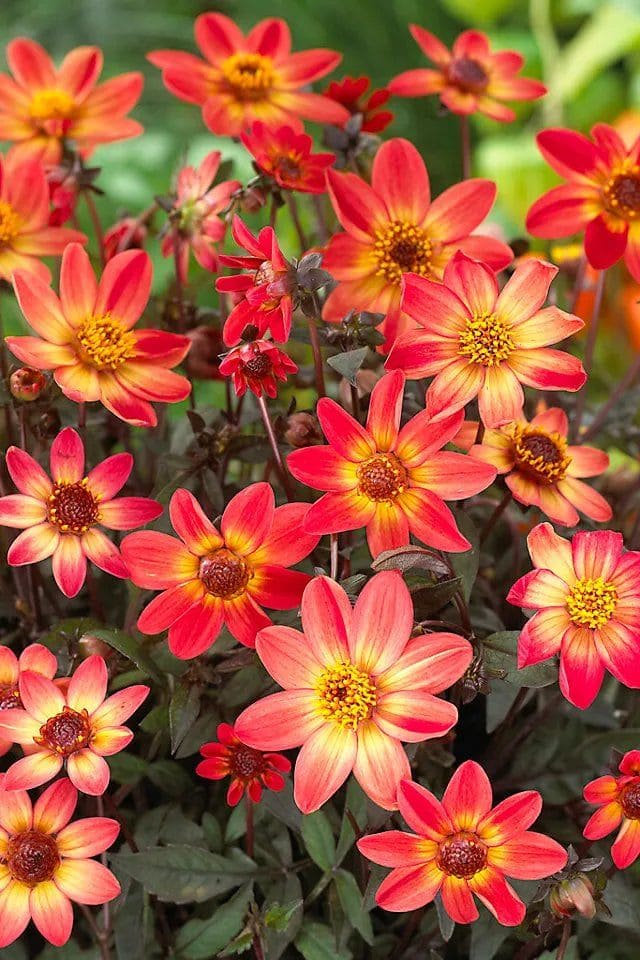
There’s something about dahlias that feels indulgent—almost too beautiful to be real. The orange varieties especially, with their layered petals and rich tones, look like they’ve been painted with care. I grow them near our patio, where their blooms stay in view long after the sun goes down.
Cutting a few for the table feels like bringing a little luxury indoors. They remind me that some parts of gardening aren’t just about growth or survival—they’re about beauty for beauty’s sake.
#11. Torch Lily
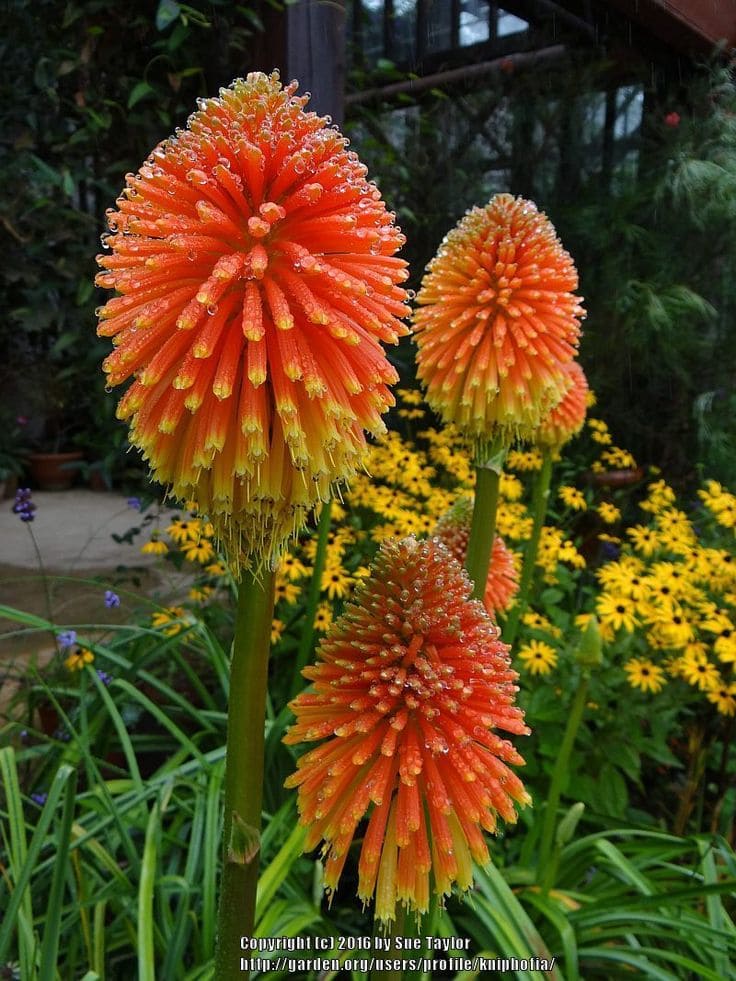
Torch lilies feel like a burst of celebration in the landscape—spiky blooms rising high, with colors that burn from yellow to deep orange. I planted mine near a weathered bench, and now they stand like sentinels, tall and proud, as if keeping watch.
They add shape and height to the beds, and when the breeze moves through them, their torch-like blooms seem to flicker. In the quiet evenings, I’ve often found myself sitting beside them, grateful for their strange, bold presence.
#12. Orange Zinnia
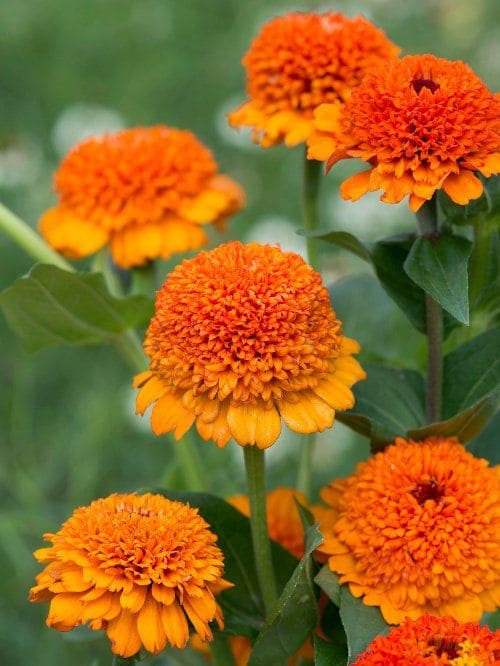
The zinnias started as a whim—seeds scattered across a forgotten patch at the edge of the veggie garden. But they bloomed like they had something to prove. The orange ones, in particular, stood out like bursts of summer joy, bright and unapologetically happy.
Their simple beauty grew on me. I’ve since made space for them every year, letting them fill gaps with warmth and color. And in return, they’ve turned ordinary corners into something worth slowing down for.
#13. Helenium
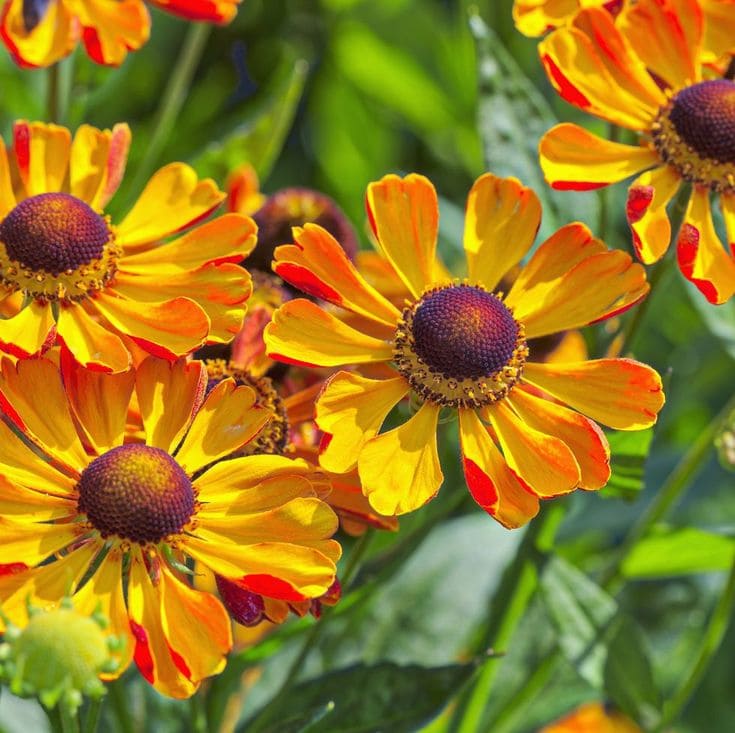
Late in the season, when the garden starts to quiet down, helenium steps forward with its bold, orange-gold blooms. The flowers bob gently on tall stems, and from a distance, they look like the sun is still hanging on a little longer.
I grow them near the back gate, where the afternoon light hits just right. That part of the yard glows in autumn, full of bees, fading grasses, and the soft rustle of change. Helenium has become part of that moment—steady, glowing, and full of late-season life.
#14. Lion’s Tail
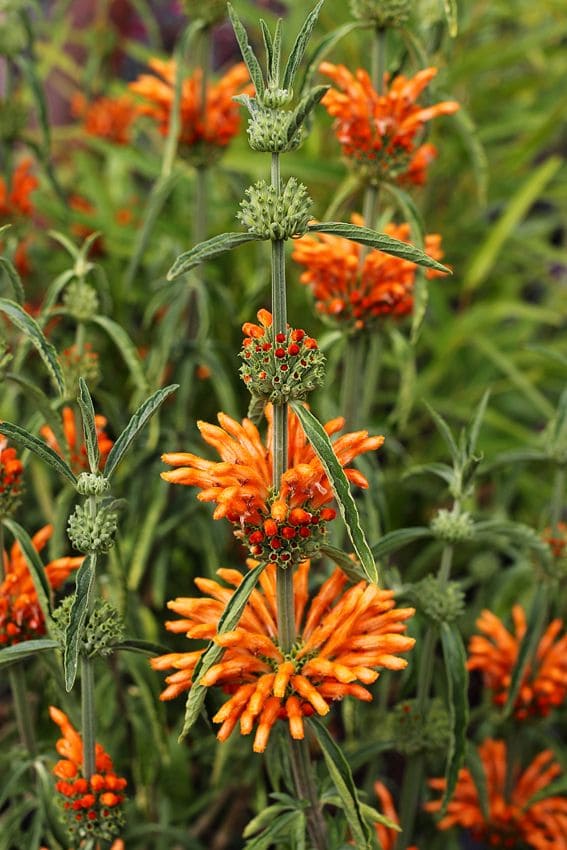
Lion’s tail isn’t a subtle plant, but it’s unforgettable. Its tall, upright stems are dotted with fuzzy, burnt-orange whorls that catch the eye from across the garden. I first grew it just to try something new, and now I can’t imagine summer without it.
It adds texture, height, and a touch of the unexpected. The garden feels a little wilder with it in bloom—like something vibrant and alive decided to crash the party and brought hummingbirds along for the ride.
#15. Orange Canna Lily
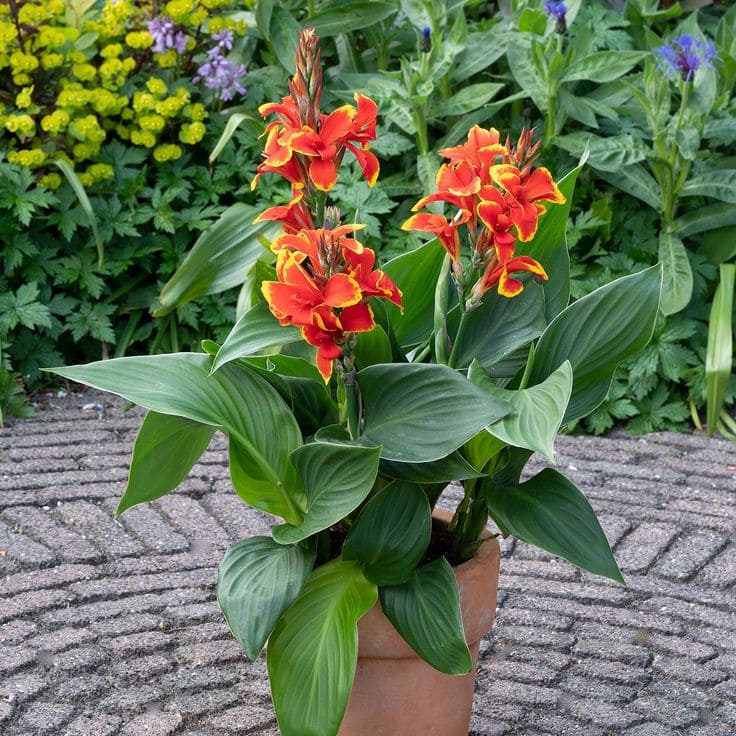
Few flowers bring a dramatic, tropical feel quite like canna lilies. Their huge, banana-like leaves provide a lush backdrop for their bold orange blossoms that bloom from summer through fall.
Though often grown as annuals in cooler zones, their rhizomes can be lifted and stored for winter, ensuring they return year after year. These plants love the heat and perform best in moist, well-drained soil.
#16. Cosmos ‘Bright Lights’
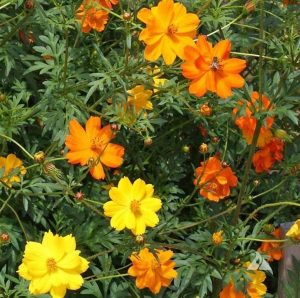
I sowed ‘Bright Lights’ cosmos on a whim in the kids’ garden patch, and they lit up the space better than I could’ve imagined. Each flower seemed to reach toward the sun with joy, in a shade of orange so vivid, it almost looked painted. The bees came, then butterflies, and the whole area came to life.
Their presence is effortless. I never fuss over them, and they reward me with blooms until frost. Watching them sway in the breeze on summer afternoons has become one of those quiet pleasures I look forward to every year.
#17. Tithonia ‘Goldfinger’

Tithonia ‘Goldfinger’ isn’t shy. Its flowers are blazing orange and stand out in any setting—bold and unapologetic. I first discovered it through a friend who called it “sunshine on stems,” and once I saw it blooming in her butterfly garden, I was hooked.
I now plant it along my walkway where it welcomes every visitor with energy and color. Hummingbirds practically queue up for it. It doesn’t just brighten the garden; it wakes it up.
#18. Orange Lupine

Orange lupines feel like spires of celebration. They stand upright, proud and blazing, adding vertical drama to otherwise sleepy borders. I planted them alongside soft blues and whites, and the contrast was so striking, it became the most talked-about part of the garden that year.
They carry this woodland-meets-cottage-garden charm, bringing both wildness and elegance. When they bloom, it’s not just a floral moment—it’s a statement.
#19. Geum ‘Totally Tangerine’
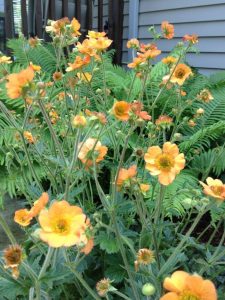
Orange lupines feel like spires of celebration. They stand upright, proud and blazing, adding vertical drama to otherwise sleepy borders. I planted them alongside soft blues and whites, and the contrast was so striking, it became the most talked-about part of the garden that year.
They carry this woodland-meets-cottage-garden charm, bringing both wildness and elegance. When they bloom, it’s not just a floral moment—it’s a statement.
#20. Montbretia
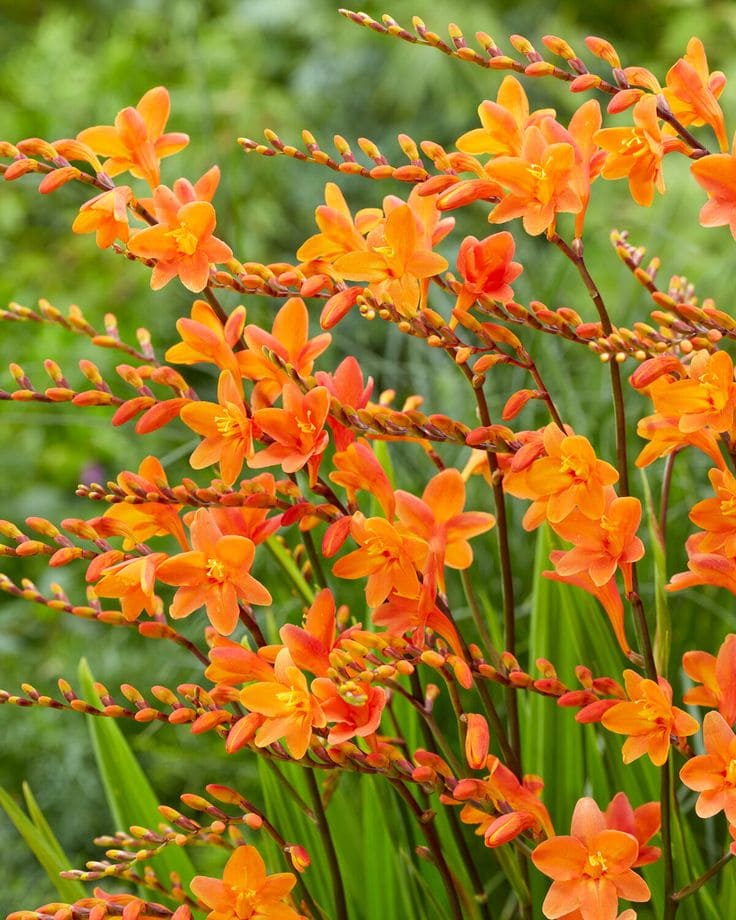
Montbretia has a wild rhythm to it. The arching stems and fiery blooms make every breeze feel like choreography. I added it on a whim to fill a corner of the garden that always felt too quiet, and suddenly, it was the most energetic space we had.
The blooms come in waves through late summer, just when everything else begins to settle down. And with every bright flower that opens, the garden hums with life a little longer.
#21. Satsuma Marigold
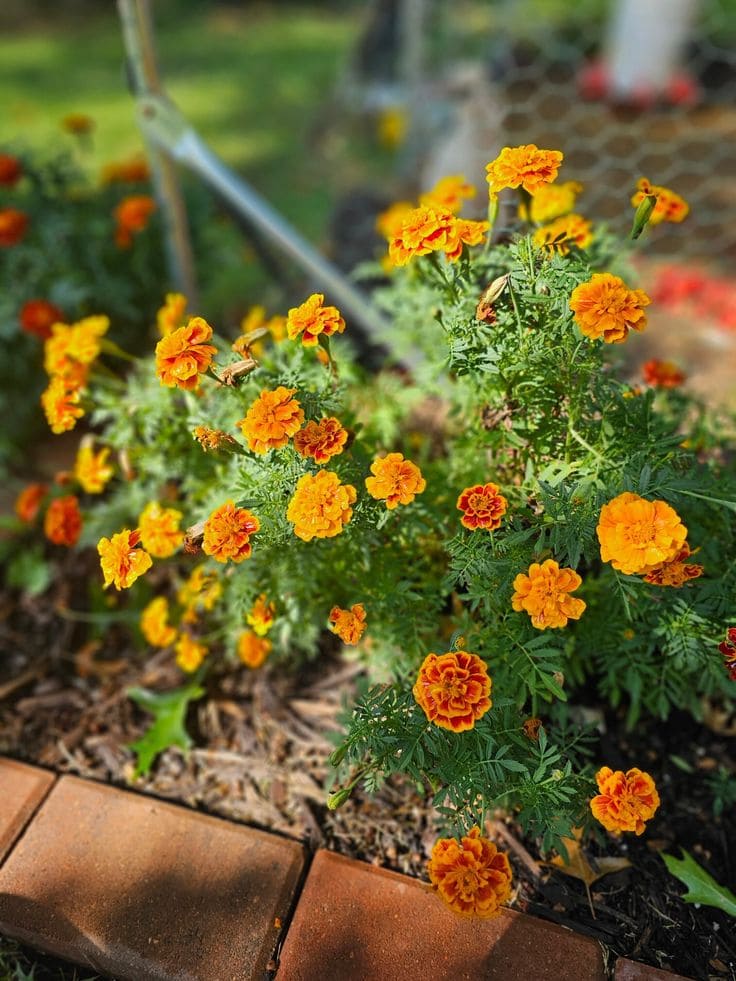
I planted satsuma marigolds in a patch of poor soil behind our shed—half as an experiment, half just to fill the space. I didn’t expect much. But by midsummer, they had exploded with giant, pom-pom blooms in the richest shade of orange. Their spicy scent filled the air, and every bee in the neighborhood took notice.
They’ve since become one of my favorite late-summer flowers, not just for their resilience but for their unapologetic cheer. Whether tucked into a mixed border or lining a path, they turn even the humblest corner into something joyful.
#22. Tangerine Potentilla
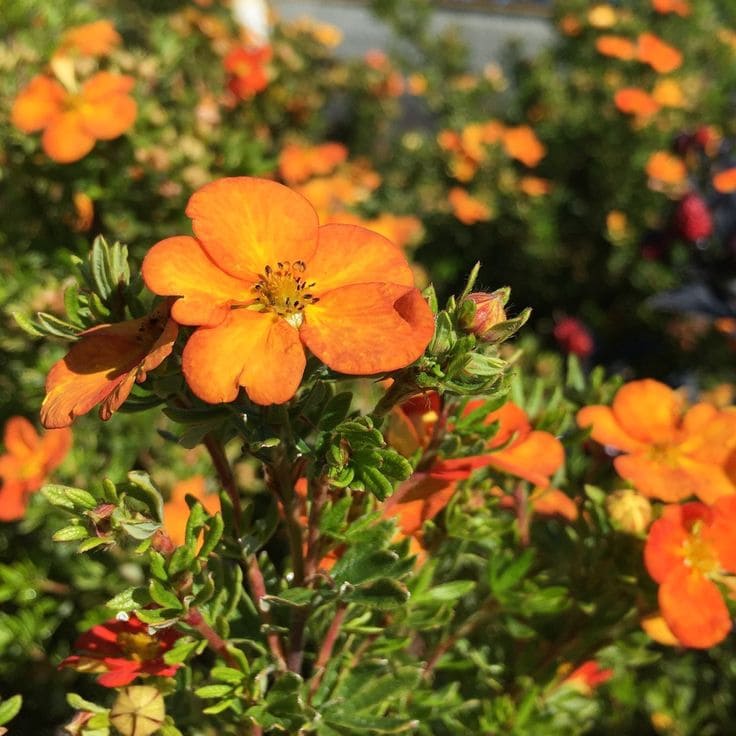
Tangerine potentilla surprised me. I picked it up on a whim at a plant sale, drawn more by its name than anything else. But once it settled in, I realized what a gem it was. Low-growing and bushy, it’s constantly dotted with small orange flowers that somehow never look tired—even in the heat of summer.
It’s become one of those reliable workhorses in my garden, blending seamlessly with ornamental grasses and lavender. It never shouts for attention, but it holds its own beautifully, and the bees love it too.
#23. Orange Alstroemeria
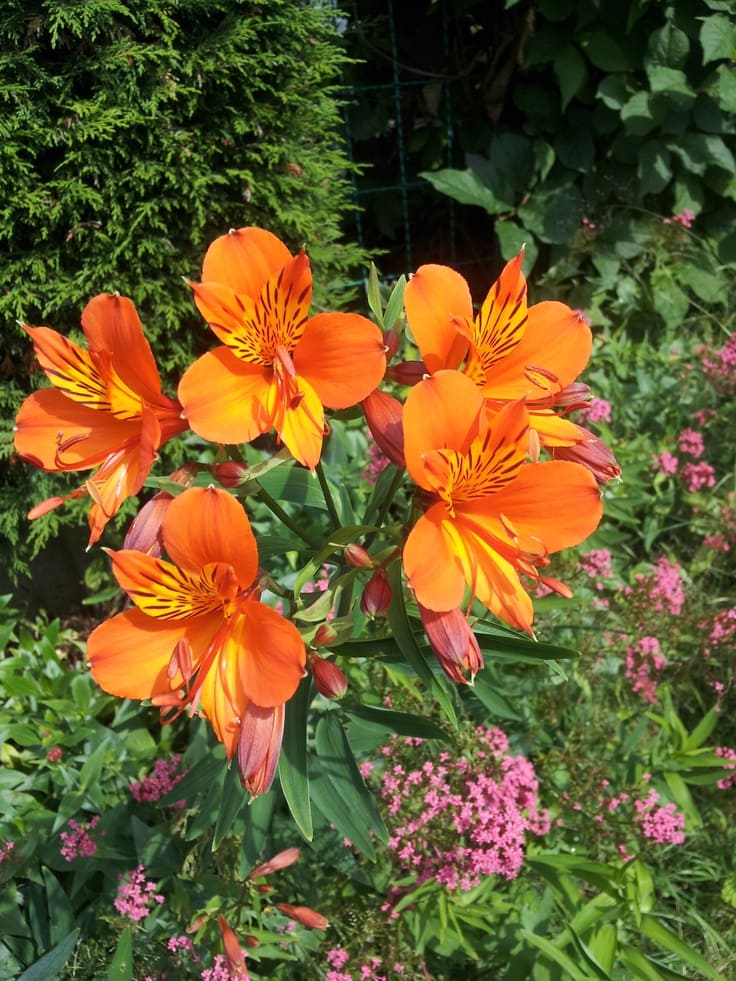
Tangerine potentilla surprised me. I picked it up on a whim at a plant sale, drawn more by its name than anything else. But once it settled in, I realized what a gem it was. Low-growing and bushy, it’s constantly dotted with small orange flowers that somehow never look tired—even in the heat of summer.
It’s become one of those reliable workhorses in my garden, blending seamlessly with ornamental grasses and lavender. It never shouts for attention, but it holds its own beautifully, and the bees love it too.
#24. Apricot Chrysanthemum

When everything else begins to fade, apricot chrysanthemums arrive like a soft sunset over the garden. Their rounded blooms in shades of burnt peach and gold bring warmth to those cooler fall days. I plant them in containers near the porch, where I can admire them each evening as the light dips low.
They’ve become part of my autumn rhythm—paired with pumpkins, tucked among fading herbs, quietly holding space as the season winds down. It’s a gentle kind of glow, the kind that stays with you even after the petals fall.
Final Thoughts
Some flowers whisper, others shout—orange ones sing. Not in a loud, demanding way, but like a song you didn’t know you needed until you heard it drifting across the yard on a summer breeze. These perennials don’t ask for perfection. They show up through heat, in poor soil, under full sun, and still manage to bloom like they mean it.
What I love most is how these plants hold space when the rest begin to fade. They carry the garden through change. Through long summers, late blooms, and even into fall, they’re still standing—bright, bold, and a little wild.
I hope you find a place for one of these in your garden. Or maybe all of them. Because sometimes, what a garden really needs isn’t just more flowers—but more light, more courage, more color that refuses to disappear quietly. Let these be that color.



